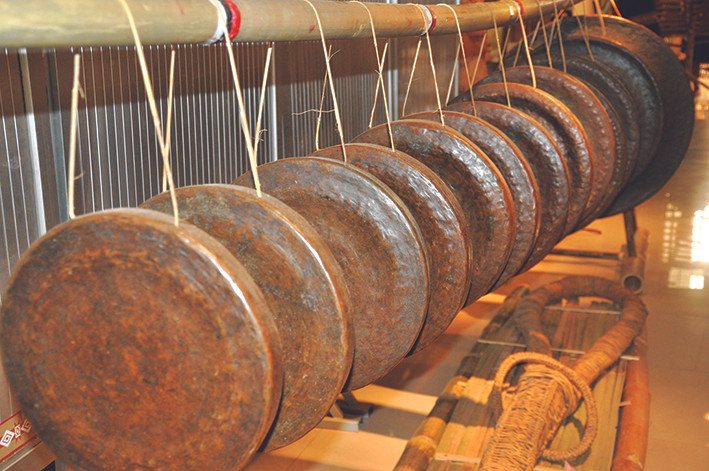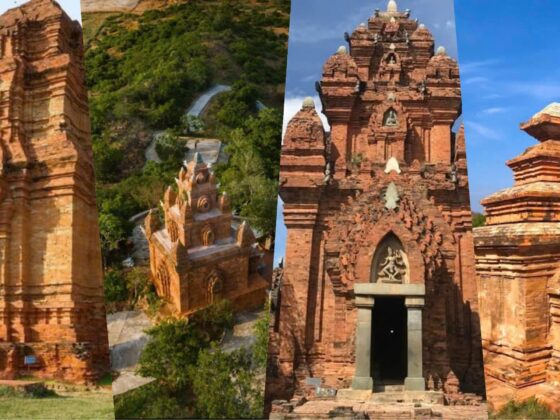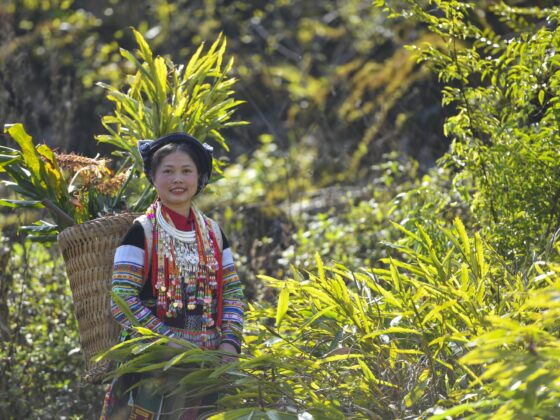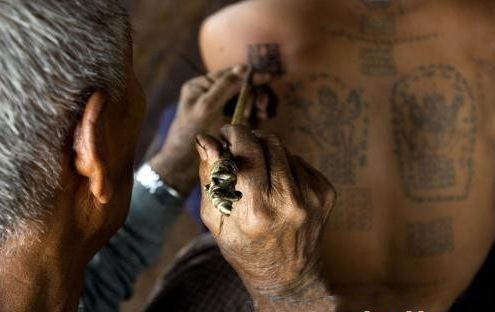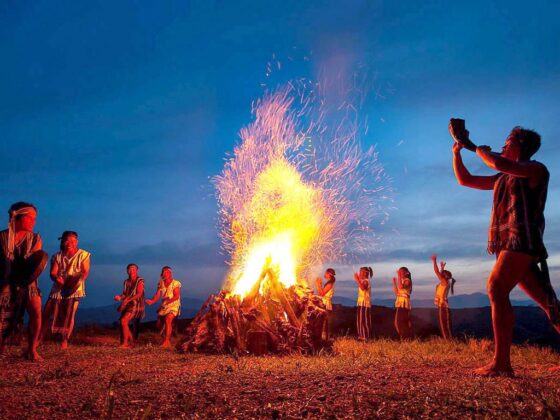Table of Contents Show
Discover the Gong culture Vietnam through the raw rhythm and living spirit of the Central Highlands, a place where music isn’t just heard, but felt deep in your bones. In this journey with ExoTrails CEO Michael Wong, the echo of bronze gongs becomes a doorway into Tây Nguyên’s heritage: ancient, communal, and fiercely alive. From firelit village gatherings to the heartbeat-like pulse that carries stories across generations, this is where sound turns into memory, and where every traveler finds themselves part of something timeless.
Read more interesting posts here:
- Central Highlands Gong Culture: An Immersive Journey into Tây Nguyên
- Where the Stars Burn Brighter: The Unforgettable Tây Nguyên Campfire Experience
- Cloud Hunting in Ta Xua Nature Reserve: A Journey Above the Mist
Immersing in the unique Gong culture Vietnam

Adventure doesn’t always start on a trail. Sometimes, it begins with sound — the slow rise of rhythm through open air, the deep pulse of a gong echoing across the hills of Vietnam’s Central Highlands. Here in Tây Nguyên, where mountains meet red earth and the scent of coffee drifts through pine forests, music isn’t just art. It’s identity. And when night falls, the Gong culture Vietnam ensures that music becomes memory.
I remember one evening in Gia Lai Province, near Pleiku, where I joined a small Bahnar village as they prepared for a gong performance. The fire crackled in the square, the air cool after the day’s heat. Around me, people gathered in a loose circle — elders, children, visitors, everyone drawn to the warmth and the anticipation. Then, without ceremony, the first gong rang out — low and resonant, followed by another, and another, until the sound filled the air like a heartbeat.
The history and significance of Gong culture Vietnam

The gongs are bronze, each tuned to a different pitch. Played together, they weave patterns that seem both structured and free, rising and falling like the wind over the plateau. The rhythm is ancient — older than any written language in the region — and is the foundation of Gong culture Vietnam, passed down through generations of Ê Đê, Ba Na, and Jarai families. Some say each gong has a spirit; others believe it carries the voice of ancestors. Listening, I understood both.
The music wasn’t performed for us. It was shared with us. Men played in a steady rhythm, women danced with baskets and torches, and laughter rippled through the night. Children clapped along, their joy as natural as the firelight on their faces. Between songs, rice wine was passed around in large clay jars, drunk through bamboo straws, each sip accompanied by a smile or a story. It wasn’t a performance — it was a moment of belonging within the Gong culture Vietnam.
The Gong culture Vietnam found in Tây Nguyên is recognized by UNESCO as an Intangible Cultural Heritage of Humanity, but that title only hints at what it truly means. This isn’t just a tradition to be preserved; it’s a living bridge between generations. Every festival, harvest, and family celebration carries the sound of the gong — a reminder that life, like rhythm, is strongest when shared.
Connecting travelers to Gong culture Vietnam

During my time there, an elder told me something I haven’t forgotten: “The gong speaks when we cannot.” I looked around — at faces lit by the fire, at children leaning against their mothers, at the steady hands of the musicians — and realized he was right. The music held everything: pride, memory, and the quiet strength of people who have lived in harmony with these lands for centuries.
At ExoTrails, our work is about more than trails and maps. It’s about connection — not just between travelers and nature, but between travelers and the rich Gong culture Vietnam. We’ve mapped routes through Tây Nguyên that bring people closer to the human stories behind the landscape, coffee farms run by small families, craft villages where instruments are still handmade, and communities that welcome visitors not as tourists but as guests. Technology helps us guide people safely and respectfully, but the real journey begins when you put the phone down and listen.
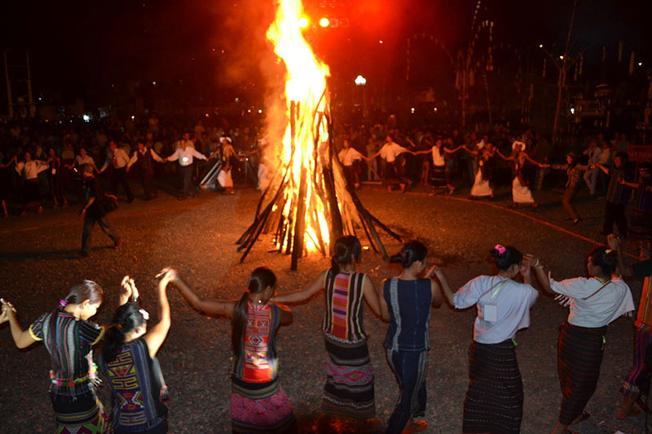
That night, as the last gong faded into silence and the fire sank to glowing embers, I lay on the red earth and watched the stars. The sound still hummed in my chest, steady as a heartbeat. It struck me then that adventure isn’t always about movement — sometimes it’s about stillness, about letting a place speak in its own language.
In Tây Nguyên, the spirit of the gong isn’t just music. It’s memory, carried in sound, kept alive by those who refuse to let it fade. And when you stand under the stars, with the earth beneath you and that rhythm in your heart, you realize — the mountains may be silent, but the people are not.
Conclusion
Witnessing the Gong culture Vietnam firsthand is a profound experience that transcends simple sightseeing. It is an invitation to understand the soul of the Central Highlands and the communities that have guarded these traditions for centuries. Through ExoTrails, we hope to guide you not just to the destination, but to the heart of the culture, ensuring that these ancient rhythms continue to resonate for generations to come.
Join our vibrant community on Facebook to share your trekking stories and tips, and don’t forget to like the ExoTrails fanpage for the latest updates and exclusive offers!
Frequently Asked Questions (FAQs)
1. What is Gong culture Vietnam?
Gong culture Vietnam, specifically in the Central Highlands, is a traditional musical art form recognized by UNESCO where bronze gongs are used to communicate with deities, ancestors, and the community during festivals and daily life.
2. Where is the best place to experience Gong culture Vietnam?
The best places to experience this culture are in the five provinces of the Central Highlands (Tây Nguyên): Kon Tum, Gia Lai, Đắk Lắk, Đắk Nông, and Lâm Đồng.
3. When do Gong performances typically take place?
While spontaneous performances can happen, the most significant displays of Gong culture Vietnam occur during the dry season (November to April) during harvest festivals, weddings, or the annual Gong Festival.

